Knowing how to make mirepoix is an essential kitchen fundamental to have under your belt! This aromatic trio lays the foundation for a plethora of soups, stews, sauces, and more. Find out what it is, variations, how to make your own, and how to use it!
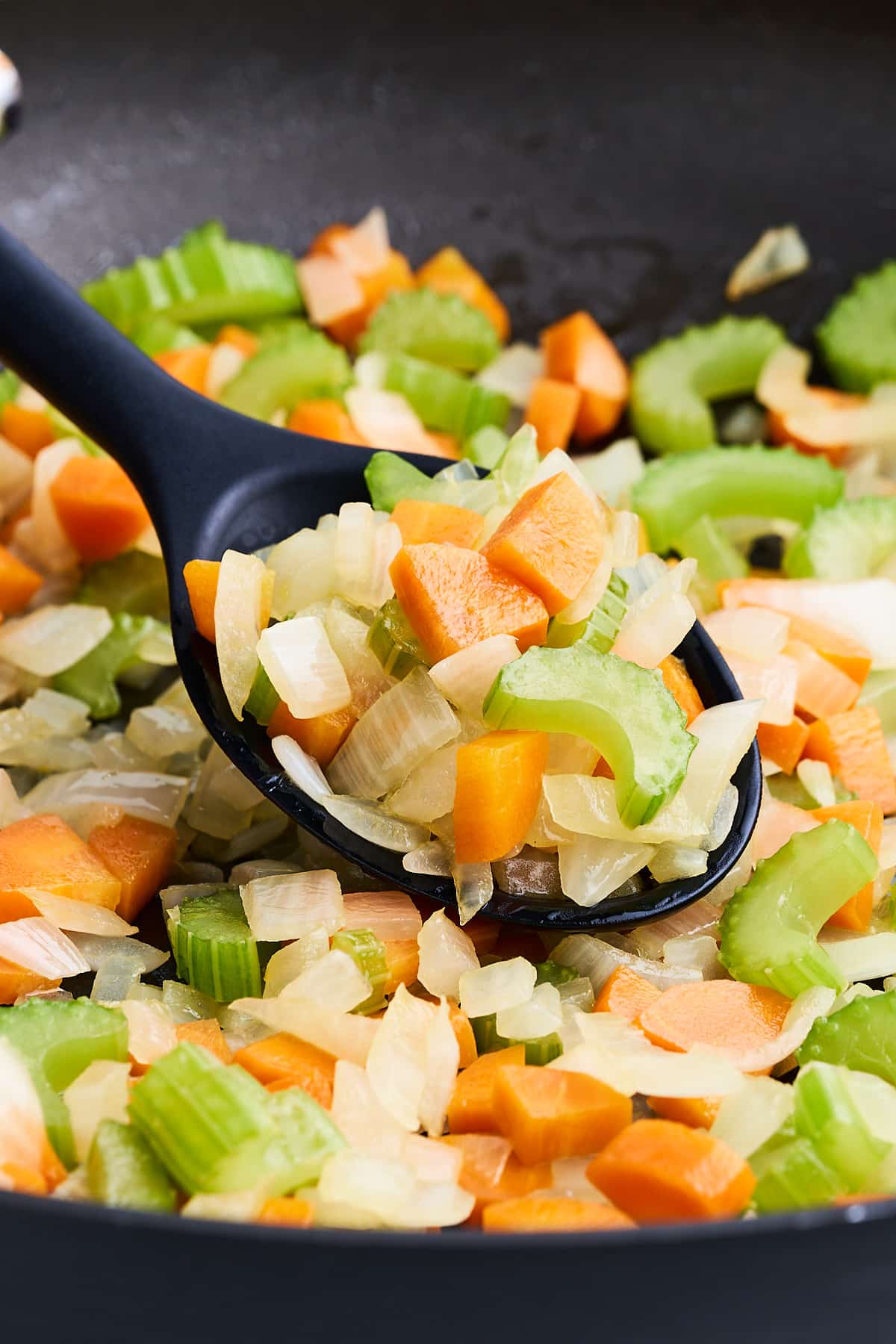
What is mirepoix?
Mirepoix (pronounced “meer-pwah”) hails from France and is a crucial component in various dishes, from wild rice soup to vegan beef stew. This aromatic is made from a simple combination of three fundamental ingredients: diced onions, celery, and carrots.
Typically, the ratio is 2 parts onions to 1 part celery and 1 part carrots, but that’s not a hard and fast rule.
It can be prepared with butter or oil, but butter is the more common French variant. Cooked low and slow, the veggies become tender and sweet without browning or caramelizing at all.
What are aromatics in cooking?
Aromatics are ingredients used at the beginning of cooking to develop a deep flavor foundation. They usually include a combination of vegetables and herbs (and sometimes spices) that are sautéed together.
Examples across various cuisines include French mirepoix, the holy trinity in Cajun and Creole cooking, Spanish and Portuguese sofrito, German Suppengrün, and Italian soffritto. You’ll also find aromatics at the beginning of most Indian curries and Eastern Asian dishes.
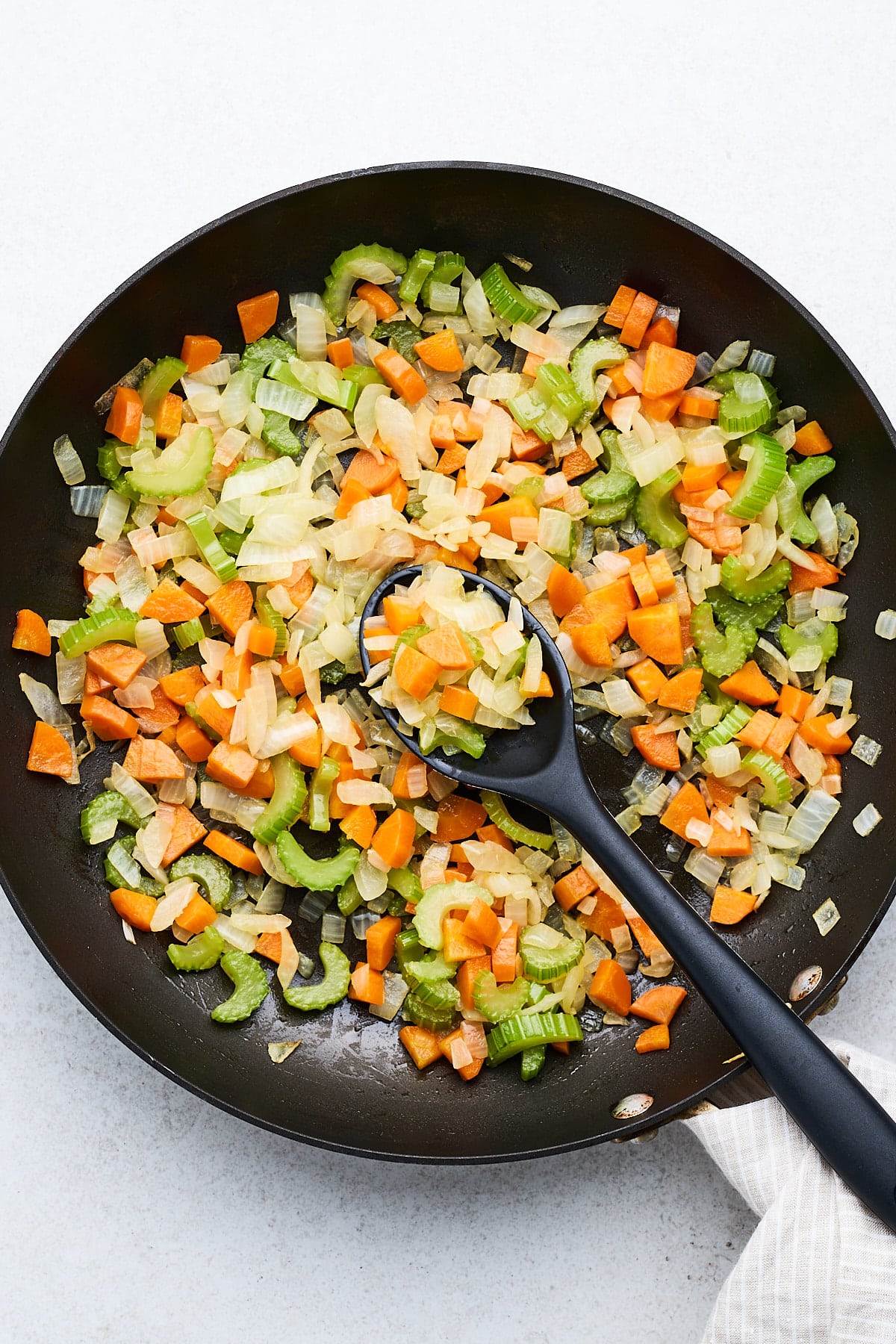
How to make mirepoix
Now that you know what mirepoix is, it’s time to learn how to actually make it! Follow these steps for perfect results every time:
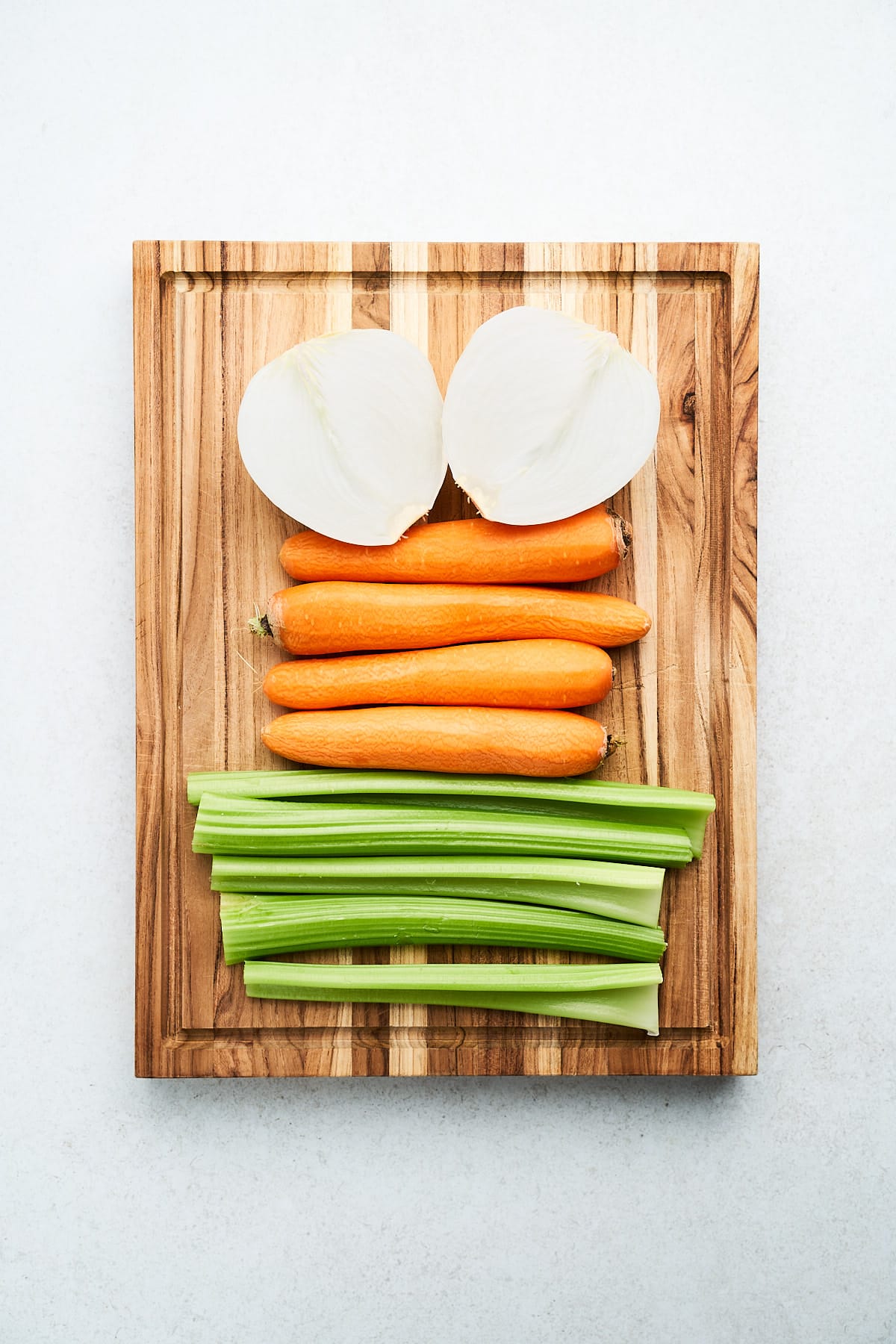
Step 1: Prep the veggies
Start by thoroughly cleaning your vegetables. Then, dice the onions, carrots, and celery in a 2:1:1 ratio. For more information about how to dice vegetables for mirepoix, visit our how to cut carrots and how to cut onions posts.
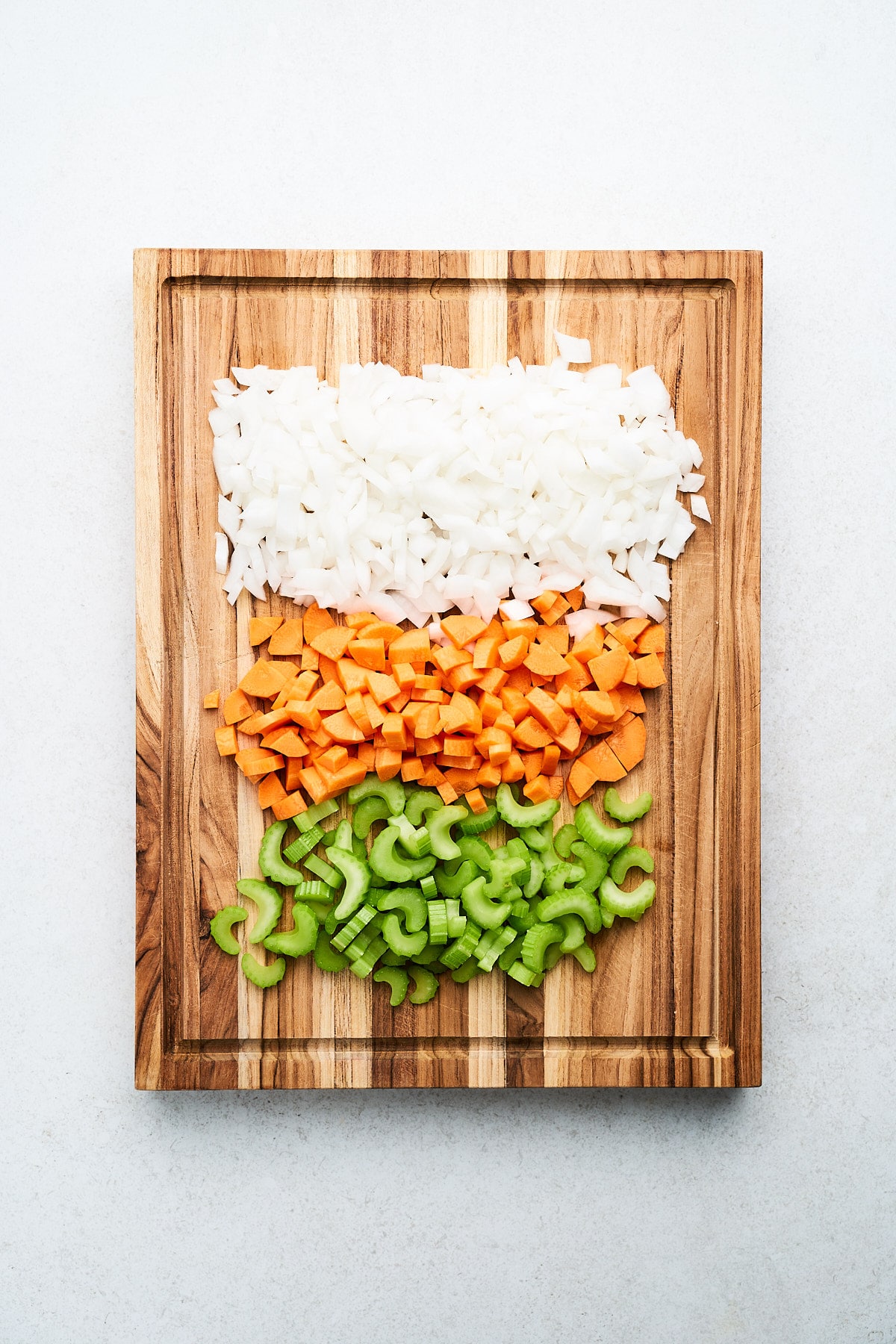
As a general rule of thumb, keep the pieces small (¼ – ½-inch) for sautéed recipes, medium ( ½ – 1-inch) for soups and stews, and larger for stock, broth, or blended soups (1-2 inches).
Step 2: Cook the veggies
In a pan over low-medium heat, add a splash of oil or a knob of butter. Once that’s heated, add all of the mirepoix vegetables. Cook them low and slow until the onions turn translucent and the other vegetables are softened.
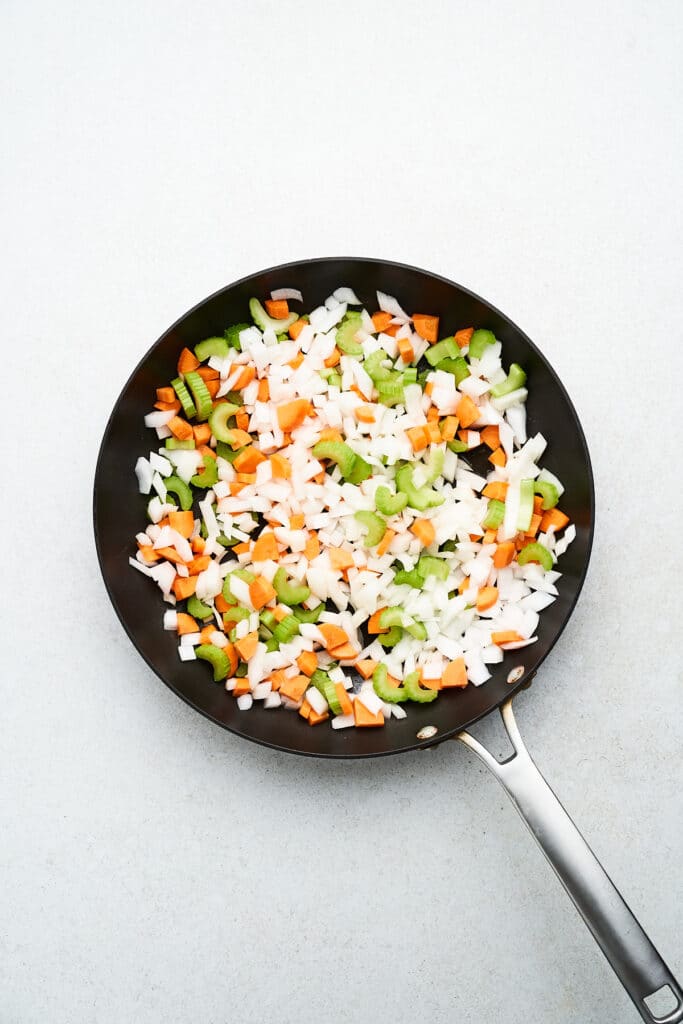
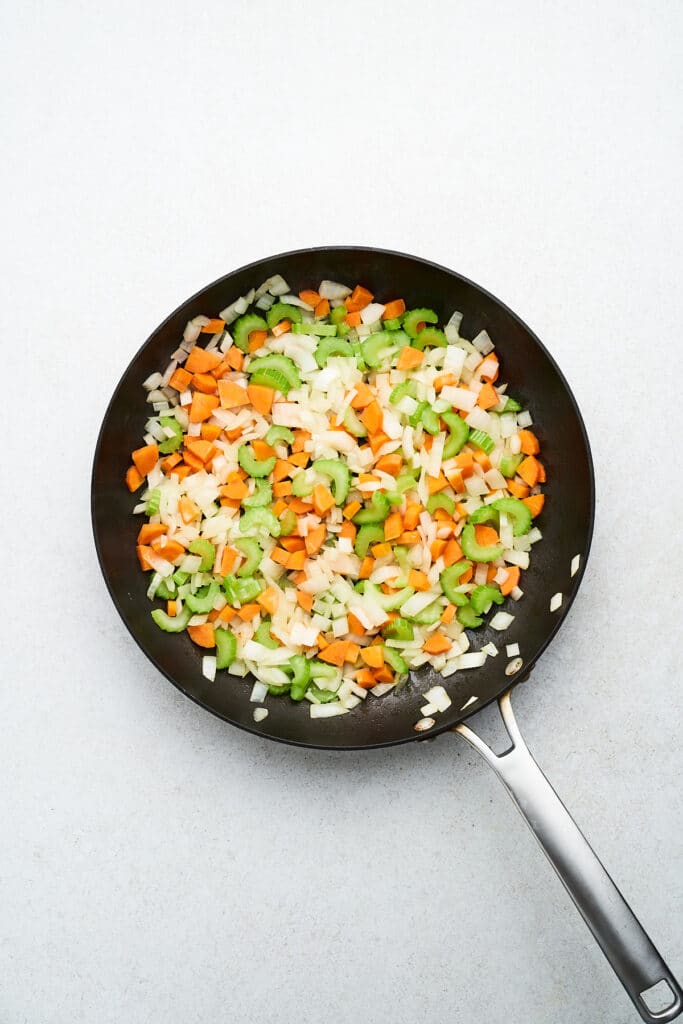
Remember to stir them occasionally and adjust the heat to prevent browning. Use your mirepoix immediately in your recipe or cool it and store it for later use!
Mirepoix vs. other aromatic bases
Aromatic bases are foundational to a wide array of cuisines, and while mirepoix is a famed French aromatic base, there are several others worth noting:
- French pincage: This is essentially a mirepoix but with the addition of tomato paste, offering a richer and slightly tangy base.
- The holy trinity: This is the backbone of Cajun and Creole cuisine, consisting of onions, celery, and green bell peppers. Try it in our Vegan Gumbo!
- Sofrito: Primarily composed of garlic, onions, and tomatoes.
- German suppengrun: A flavorful foundation often used in German soups and stews, typically made with leeks, carrots, and celeriac.
- Italian soffritto: Often a blend of finely minced onions, garlic, and celery sautéed in olive oil. Some variations may include carrots, parsley, or fennel.
- Chinese trinity: Ginger, garlic, and green onions (scallions) form the aromatic trio commonly used in a variety of Chinese dishes.
- Thai krueang gaeng: A paste made of various ingredients and Asian vegetables, the most common being lemongrass, galangal, kaffir lime leaves, and shallots.
- Indian tadka: This aromatic base often begins with spices like mustard seeds, cumin, and asafoetida fried in oil or ghee, followed by ingredients like onions, ginger, and garlic.
Storage
Preparing your mirepoix in advance ensures a burst of flavor at your fingertips for every meal! Follow these storage tips to get the most out of your hard work:
- Fridge: Freshly chopped (uncooked) mirepoix can be stored in the refrigerator for up to a week in an airtight container.
- Freezer: Pre-chop the vegetables and store them in airtight containers or zip-lock bags for up to 6 months. Frozen mirepoix is great for blended soups and stews since onions and celery don’t hold up too well once thawed.
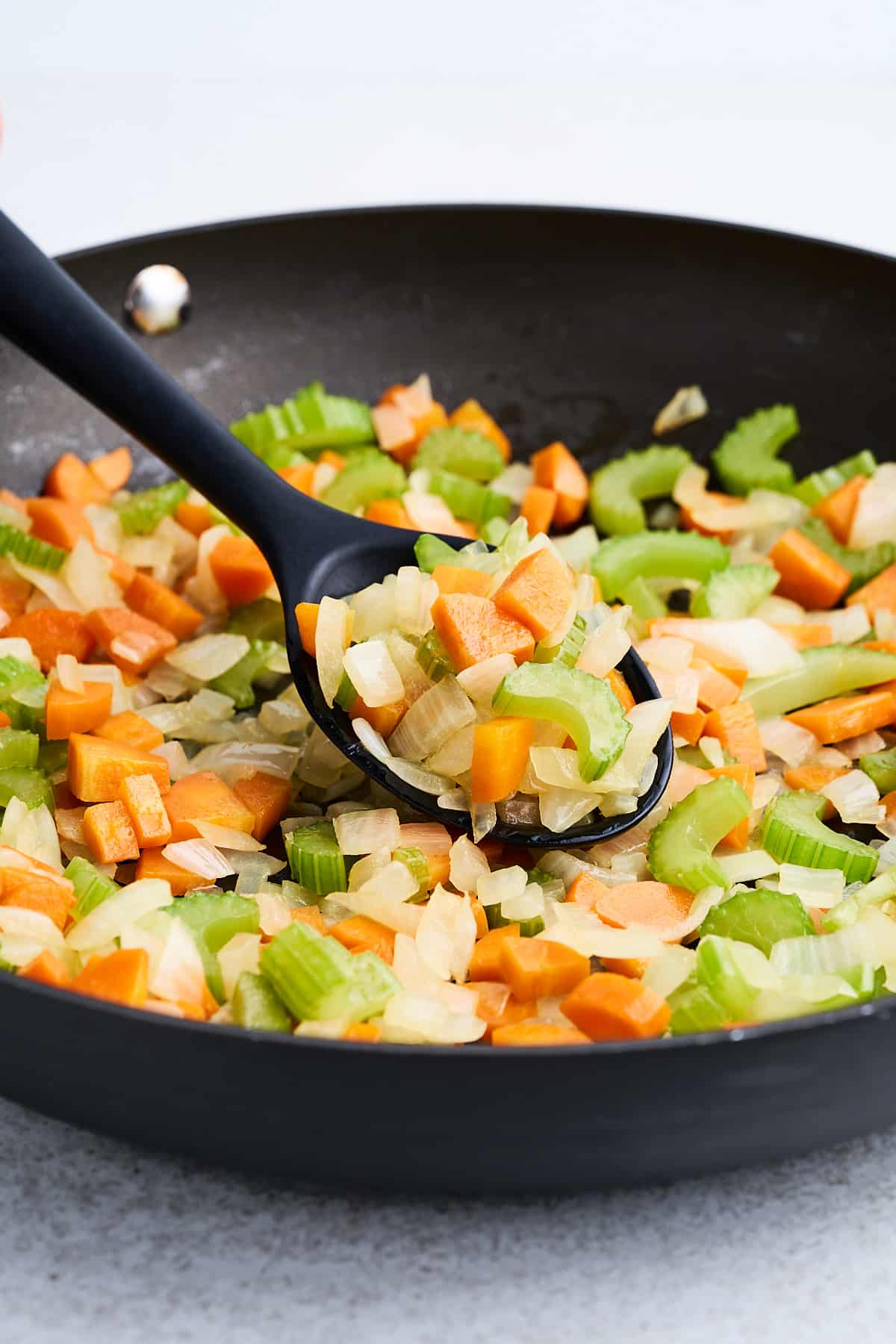
Tips for making mirepoix
- Dice consistently: Ensure all the veggies are diced to a similar size for even cooking.
- Sauté gently: Avoid high heat to prevent browning or burning. Aim for translucent vegetables to perfectly bring out their natural sweetness.
- Balance the ratio: Stick to the classic 2:1:1 ratio of onions, carrots, and celery for a traditional mirepoix flavor base.
- Experiment with fats: While butter is traditional, consider using olive oil or even a combination of both to alter and enhance the flavor profile.
Mirepoix FAQs
Mirepoix is typically cooked in butter or oil until translucent before being combined with the rest of the dish. However, it can also be added raw, especially in stocks and broths.
The classic mirepoix combination is onions, carrots, and celery, but in certain cuisines or dishes, substitutions or additions might be made. However, altering the ingredients will change the dish’s overall flavor profile.
The size depends on the final use! For broths or stocks, a rough chop is sufficient. For soups or stews, a finer dice, about ½-inch or so, is preferable.
Use your mirepoix in these recipes
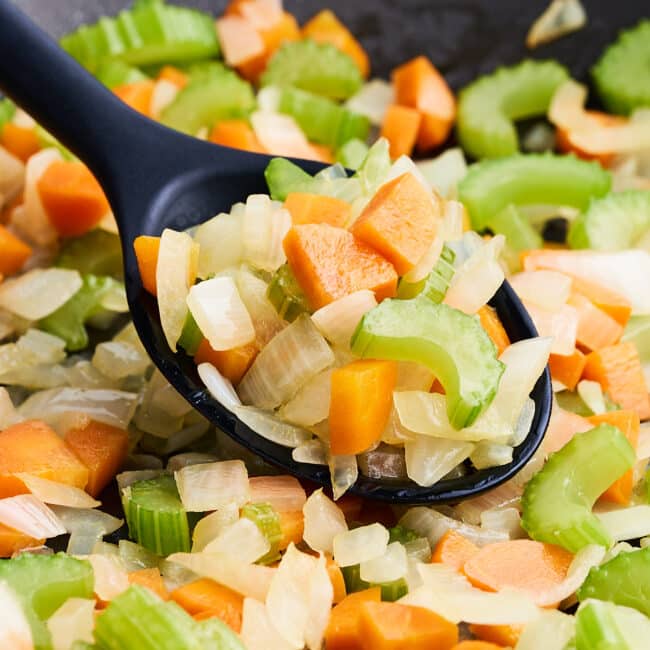
Ingredients
- 2 cups onions finely diced
- 1 cup carrots finely diced
- 1 cup celery finely diced
Instructions
- Dice: Thoroughly wash the vegetables and peel the carrots. Dice the onions, carrots, and celery in a 2:1:1 ratio.
- Cook: In a pan over low-medium heat, add a splash of oil or a knob of butter. Once that’s heated, add all of the mirepoix vegetables. Cook them low and slow for 10-12 minutes, or until the onions turn translucent and the other vegetables are softened.
- Remember to stir them occasionally and adjust the heat to prevent browning. Use your mirepoix immediately in your recipe or cool it and store it for later use!
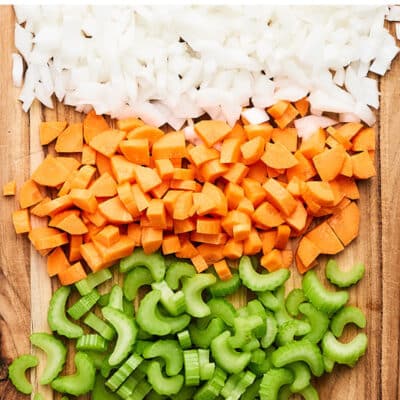
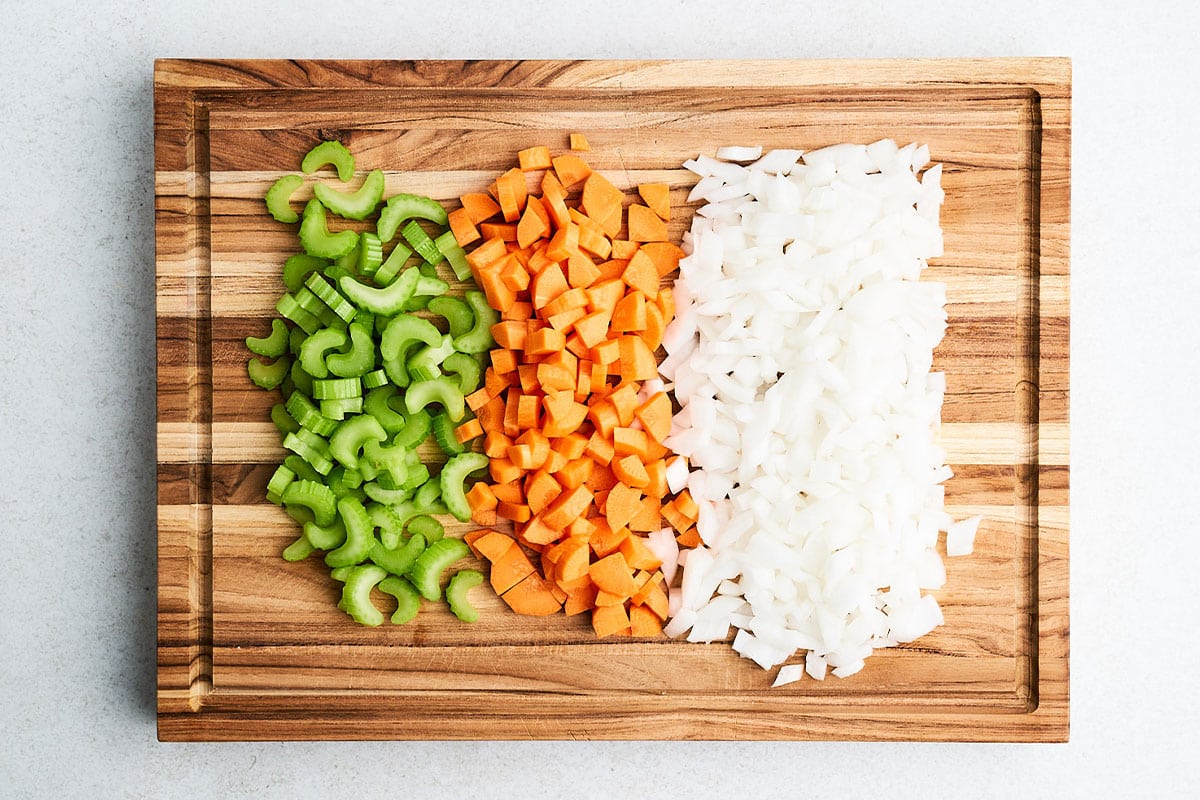
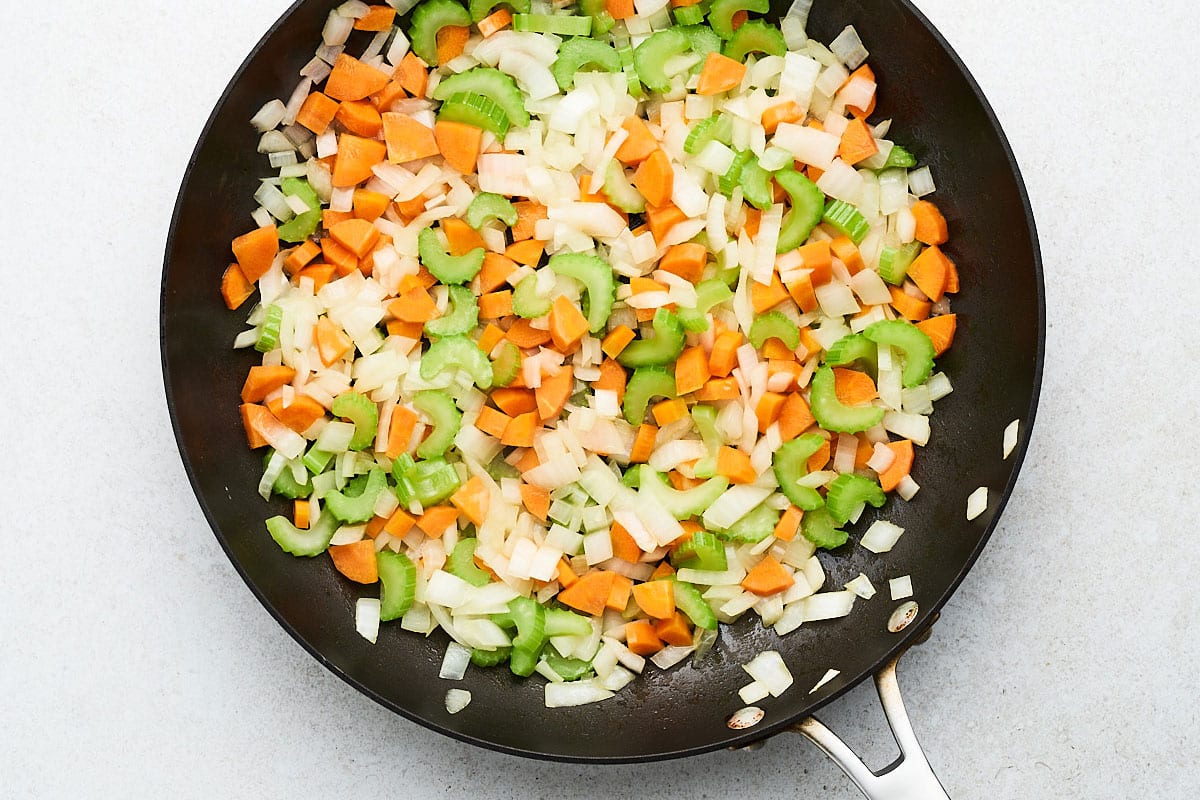


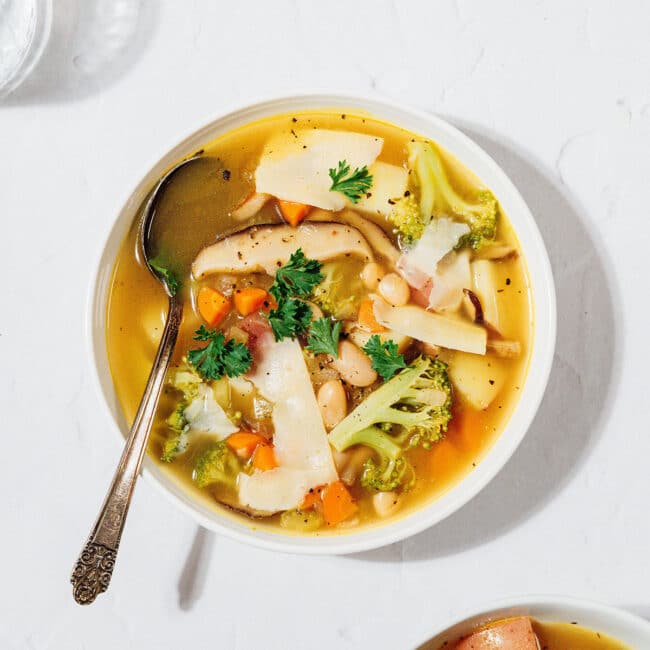

Leave a Comment